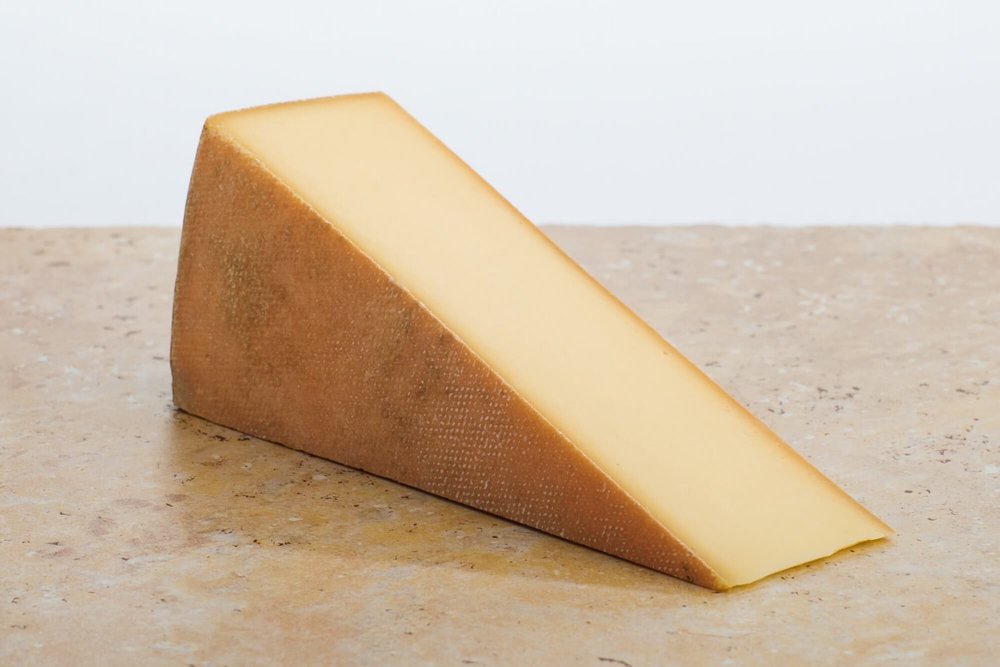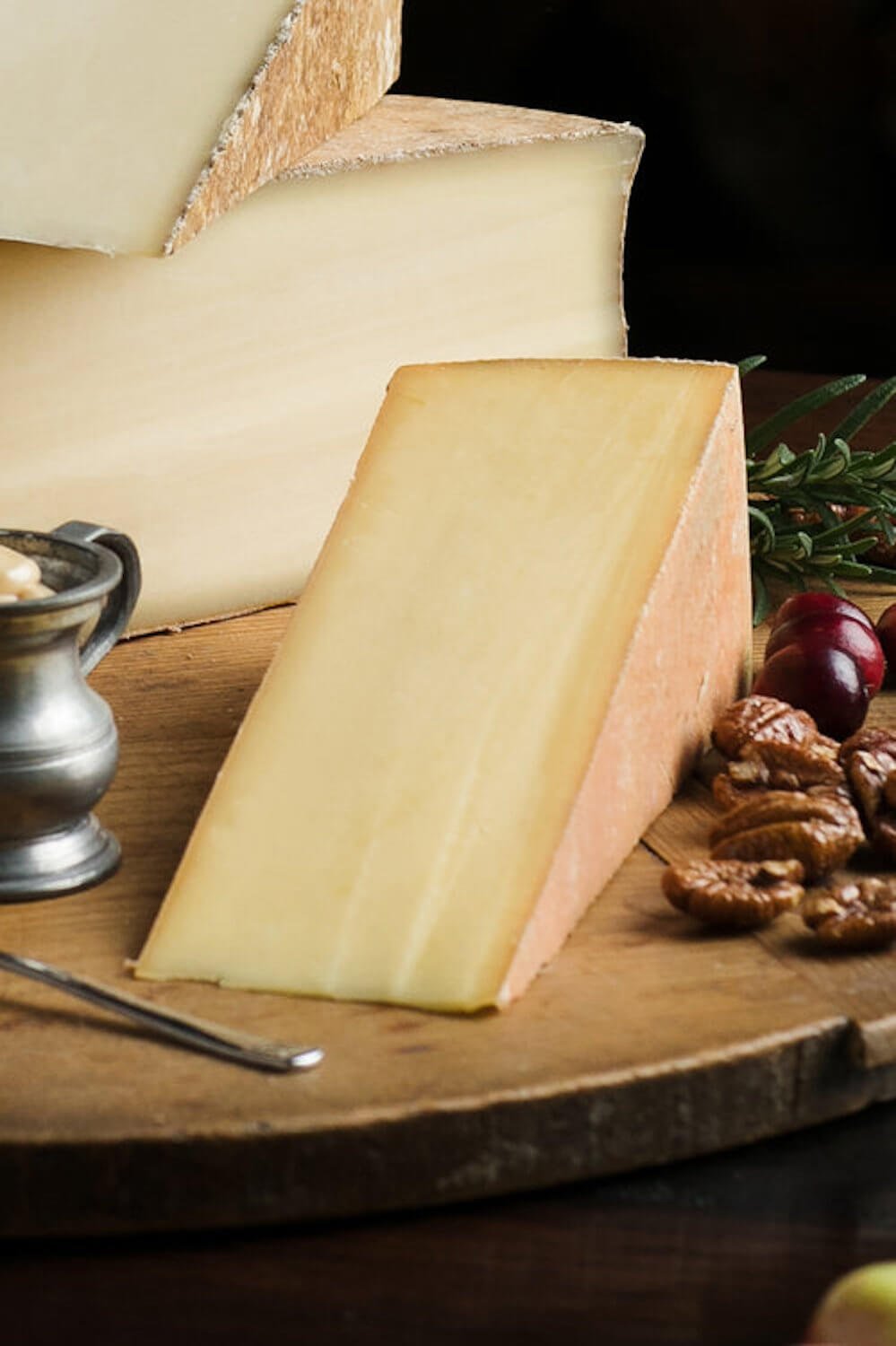
Even those who don’t know much about cheese probably know about Raclette. In the age of hyper sensory food media, who among us has not been caught drooling over videos featuring an oozy mass of hot cheese being scraped over an eagerly awaiting plate of ham, potatoes, and cornichons? Many European cheeses are named after their places of origin. Raclette, however, is named after a verb, racler, or “to scrape,” the action of which produces the hot, oozy, cheese mass described above. In our Cheese Shops We Love series, Lindsey Schechter of Houston Dairymaid cites Reading Raclette, a domestic, farmstead cheese modeled after its famous, Swiss cousin, (and actually named after its place of origin,) as one of its best sellers. Here we dive into the details of how Reading Raclette came to be.
What is Reading Raclette?

Reading — which is the cheese’s official name — is made by Vermont’s Spring Brook Farm in a Raclette style. It is a raw cow’s milk cheese, with milk collected from Spring Brook Farm’s herd, as well as 2 partner dairies. A washed rind cheese typical of Alpine style cheeses such as Gruyère and Raclette, Reading is on the younger side of Alpines, aged for an average of 3 months.
History of Reading Raclette
The history of Raclette itself dates back to as early as the 13th century, with peasant cattle herders bringing large, Alpine cheese wheels with them while cows were allowed to graze at will, warming the wheels over the evening campfire. (For further depth into the complete history of Raclette, see our article on Raclette 101.)
Reading Raclette begins a bit later, in 2010, the second of 3 European-style cheeses produced at Spring Brook Farm in Reading, Vermont by cheesemaker Jeremy Stephenson, along with Emily “Frankie” Buckley, and Lisa Griffin, following the success of Tarentaise, another Alpine-style cheese developed in 2008.
How Reading Raclette is Made

Raw milk is collected from Spring Brook Farm’s Jersey cow herd, as well as from partner dairies Jericho Hill Farm and Fox Valley Farm, whose farming practices align with Spring Brook’s, which, according to their website, includes no fertilizers, no fermented feed, and the production of dry hay.
After the development and cutting of the curd, the curds are gently heated, a step in cheesemaking which releases additional whey, and also contributes to the extreme meltability of Alpine-style cheeses like Raclette. Reading is formed into wide but short wheels which are washed in brine during affinage for an average of 3 months, giving a complexity of flavor but a semi-soft texture to the cheese.
Reading Raclette Tasting Notes
Schechter of Houston Dairymaids says, “We love this Vermont version (of Raclette) because it’s approachable but never boring.” Saxelby Cheesemongers suggests “a heady flavor that favors fruity and milky notes.” BKLYN Larder adds that it’s “sweet with a bit of farm-y funk.”
Reading Raclette Pairings
Reading features in many a grilled cheese sandwich, but its real soulmates are found on the dish that’s also named Raclette: potatoes, ham, onion, and pickles. (For a real terroir-based pairing, try something from Vermont-based Pitchfork Pickle, such as their “Netflix and Dill Pickled Green Beans.”)
Traditional Raclette beverage pairings actually include black tea, or a rich, Swiss white wine such as chasselas. For a domestic take, try richer, unoaked whites such as J Vineyards Pinot Gris, a New York International Wine Competition 2022 Gold Medal Winner, or Symbio Gewurztraminer, a NYIWC 2022 Gold Medal Winner.
